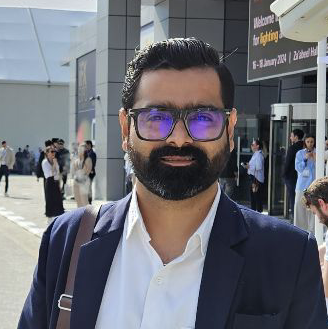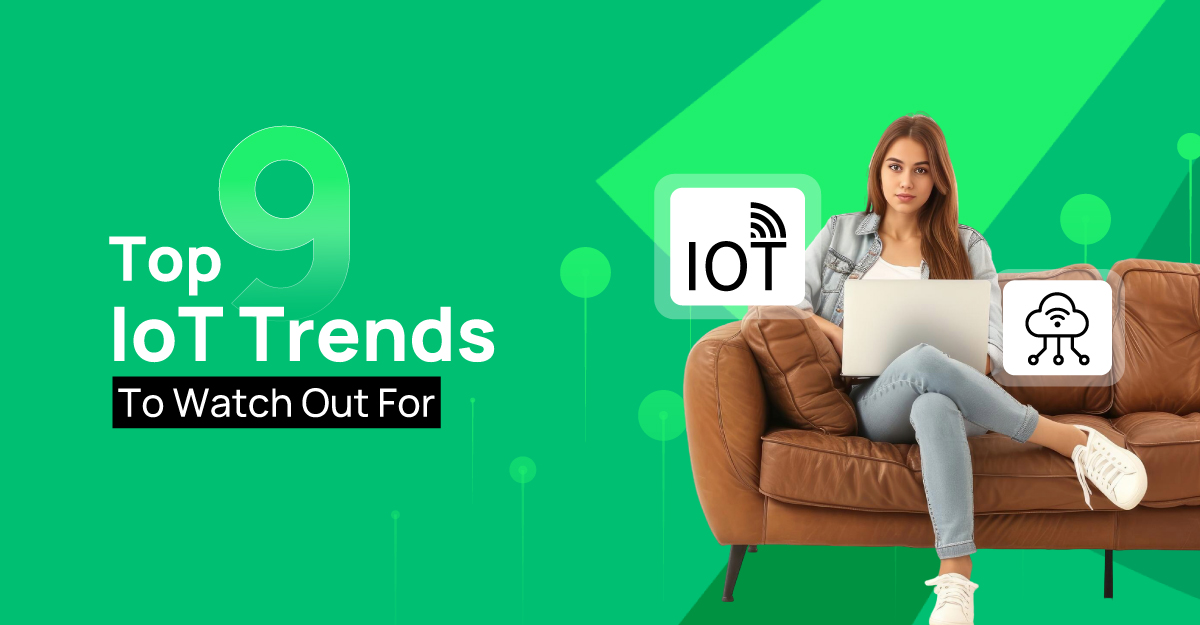As we approach 2025, the Internet of Things (IoT) is no longer just about connecting devices—it’s about making them smarter, faster, and more intuitive.
With over 29 billion connected devices projected by 2030, IoT is set to transform sectors through real-time data, AI-driven automation, and seamless integration.
IoT: A Rapidly Expanding Web of Innovation
IoT is revolutionizing how we interact with the physical world. Intelligent machines are becoming part of our daily lives, from smart refrigerators to connected roads.
This transformation is powered by innovations in AI, machine learning, robotics, cloud computing, and blockchain.
Industries such as smart agriculture, cybersecurity, education, healthcare, and smart cities are experiencing a massive shift through real-time data gathering, processing, and action.
In an October 2024 "IEEE Global Survey" on the impact of technology, 58% of participants (double the number from the year before) predicted that artificial intelligence (AI), including machine learning, natural language processing, and predictive and generative AI (GenAI), would rank among the top technologies in 2025.
The Growth Trajectory of IoT (2025–2030)
According to IoT Analytics, the enterprise IoT market reached $301 billion in 2024, up from $269 billion in 2023. Though the growth rate dropped slightly (from 18% to 15%), a steady CAGR of 15% is expected through 2030.
The number of connected IoT devices is forecasted to soar to 29 billion by 2030—up from just 9.7 billion in 2020.
Major sectors driving this adoption include utilities (waste management, gas, water, and power), retail, transportation, and government, each already deploying over 100 million devices.
Consumer IoT is also booming, especially in smart homes, with 350 million devices expected by 2025.
Younger demographics are embracing this shift—65% of 25–34-year-olds and 59% of 18–24-year-olds use voice assistants daily, often integrated into smartwatches and security ecosystems.
As IoT adoption grows, the need for customized, secure, and future-ready systems will be critical, making custom IoT development services more important than ever.
Top IoT Trends in 2025
1. Disaggregated Systems for Smarter Data Processing
System disaggregation breaks large systems into independent computing, storage, and networking modules.
This modularity improves flexibility and efficiency, especially in complex IoT ecosystems.
It supports real-time, location-based processing and enhances edge computing performance for industries like manufacturing and logistics.
Example: In smart factories, disaggregated systems enable real-time, location-based processing of IoT data from production lines. For instance, sensors in a factory detect machine anomalies, sending data to an edge computing node instead of the cloud, ensuring faster responses and less downtime.
2. Hyper-Personalized IoT Ecosystems
AI-powered IoT devices are becoming increasingly context-aware. They learn user behavior and adjust experiences in real time—from smartwatches that detect irregular vitals to home systems that adapt lighting and temperature based on daily routines.
In sectors like healthcare and lifestyle, this personalization enables proactive health management and energy savings.
Example: A smart home system can adjust your room's temperature based on your past preferences, optimize lighting based on the time of day, and even suggest meal recipes based on what’s in your fridge. A health-monitoring device can track your sleep patterns and send reminders for a healthier lifestyle.
3. Advanced AI Integration into IoT
AI and machine learning are driving predictive capabilities in sectors like smart agriculture, manufacturing, and healthcare.
The IEEE survey highlighted key AI-powered IoT use cases:
- Cybersecurity detection and prevention tools
- AI-assisted chatbots in education
- Predictive supply chain automation
- Remote diagnostics in healthcare
Emerging tech such as digital twins, robotics, and brain-machine interfaces will further amplify the impact of AI-driven IoT.
Example: In agriculture, AI-powered IoT devices can analyze soil conditions, predict weather patterns, and suggest the best times to plant crops. In healthcare, AI-driven smart wearables continuously monitor a patient's vitals and send alerts to doctors for any irregularities in real time.
4. Edge Computing for Real-Time Decision Making
Edge computing allows data to be processed close to the source instead of centralized clouds.
This reduces latency, lowers bandwidth costs, and enables faster decision-making, essential for autonomous vehicles, healthcare monitors, and smart factories.
Edge deployments are expected to grow significantly, enabling more agile and secure IoT environments.
Example: In autonomous vehicles, edge computing processes data from cameras and sensors in real time, allowing the car to make quick decisions, such as stopping for pedestrians or adjusting speed according to traffic conditions, without relying on a centralized cloud server.
5. Massively Increased Device Connectivity
According to the “State of IoT – Summer 2024” report by IoT Analytics, global IoT connectivity will continue to scale through 2030, driven by the transition from 2G/3G to 4G/5G.
Urban smart cities will benefit most from 5G. However, rural regions will require investment in satellite connectivity and infrastructure to bridge the digital divide.
Example: 5G networks enable seamless connectivity between smart city infrastructure, such as traffic lights, surveillance cameras, and public transportation, enhancing efficiency. Rural areas benefit from satellite-based IoT networks that help connect remote farming operations for real-time data collection.
6. Blockchain-Backed IoT Security
Blockchain is increasingly used to enhance data integrity and device authentication in IoT networks. Its decentralized and tamper-proof architecture is especially useful in:
- Securing smart homes with blockchain-enabled smart locks
- Ensuring access control in industrial automation
- Validating data exchanges across connected ecosystems
As cyber threats rise, blockchain offers a scalable solution for secure IoT deployment.
Example: In supply chains, blockchain can ensure product authenticity by recording the temperature, location, and handling conditions of perishable goods. Smart locks in homes use blockchain to verify user access and ensure that unauthorized devices cannot gain control of home security systems.
7. Voice-Activated and Hands-Free Devices
Thanks to advances in natural language processing and biometric voice recognition, voice-enabled IoT is becoming more accurate and secure.
Applications range from:
- Voice-controlled home assistants and automotive systems
- Healthcare tools offering hands-free interaction
- Customer support bots that improve accessibility and user experience
This trend supports inclusive and convenient device management across industries.
Example: In healthcare, voice-activated devices can help nurses track patients' vitals hands-free, allowing them to focus on direct care. In vehicles, smart assistants provide navigation, control the climate, and assist with entertainment through voice commands, improving driver convenience and safety.
8. Improved Chip Designs and Interoperability Standards
The development of chiplets—miniaturized and modular chip components—enables faster, energy-efficient processing.
These chips, connected via Universal Chiplet Interconnect Express (UCIe), are crucial for tailoring solutions in:
- Wearable tech
- Smart city infrastructure
- Edge computing applications
Such advancements allow for better performance and interoperability across IoT ecosystems.
Example: Wearable devices like smartwatches use advanced chip designs to increase processing power while reducing battery consumption, allowing for more efficient health tracking and longer usage times. Smart city infrastructure also benefits from these chip improvements, with faster and more reliable communication between devices.
9. Non-Volatile Memory for Smarter Devices
New memory technologies like resistive RAM (RRAM) and magnetic RAM (MRAM) are gaining traction, especially for IoT designs under 28 nm. These innovations support:
- Longer device lifespans
- Lower power consumption
- Improved efficiency in wearables and other compact devices
With declining DRAM and NAND flash prices, the affordability and performance of IoT devices are set to improve.
Example: In wearable devices like fitness trackers, non-volatile memory allows for the storage of user health data without a constant power supply, improving battery life while ensuring data is not lost. Similarly, it enables more efficient and durable performance for IoT devices in harsh environmental conditions.
10. Health and Safety Through Wearable IoT
Wearable devices such as smartwatches are helping users track sleep, heart rate, and other vital signs.
In industrial settings, they monitor environmental hazards to enhance worker safety.
These wearables support early disease detection and can even trigger emergency alerts, reshaping preventive healthcare.
Example: Workers in hazardous environments wear IoT-enabled safety devices that monitor air quality, temperature, and physical condition in real time. In the event of a dangerous drop in vitals or exposure to toxic substances, the device triggers an emergency alert to safety personnel.
11. Smart Retail Powered by IoT
IoT is transforming retail operations by enabling:
- Real-time inventory tracking
- Automated checkout systems
- Personalized promotions based on shopper behavior
This improves customer experience, operational efficiency, and ultimately, revenue growth.
Example: IoT sensors in stores track customer movements, providing insights into buying behavior and enabling dynamic pricing. Smart shelves automatically reorder stock when levels are low, and customers can use their smartphones to pay through automated checkout systems, enhancing convenience and customer experience.
12. IoT-Driven Transformation in Healthcare
IoT in healthcare is enabling remote monitoring, predictive diagnostics, and real-time patient tracking.
Hospitals are integrating connected devices that reduce hospital stays and improve care.
AI-powered IoT is expected to perform over 70% of routine diagnostics remotely by 2030, increasing efficiency while reducing healthcare costs.
Example: In hospitals, connected devices monitor patients’ vital signs and send alerts to doctors if there are any abnormal readings. Wearable devices like smartwatches can detect irregular heart rhythms, and IoT-enabled systems help reduce the need for frequent in-person checkups, allowing for more efficient, cost-effective care.
Final Thoughts: Thriving in an IoT-First Future
IoT is no longer futuristic—it’s here, and it’s transforming everything from home automation to smart farming.
With a projected 29 billion connected devices by 2030, industries must embrace this wave with smart strategies.
Technologies like AI, blockchain, 5G, and edge computing are making IoT ecosystems more adaptive and secure.
However, success in this dynamic space demands scalable, secure, and interoperable solutions.
At IConflux, we help enterprises tap into the full potential of connected technologies.
Our expertise in cloud integration, real-time data analytics, and custom IoT development enables businesses to build intelligent, future-proof systems.
Want to know how we can build your next-gen IoT solution? Let’s connect.



